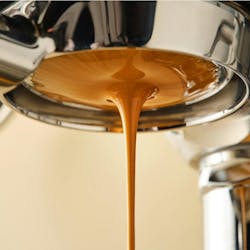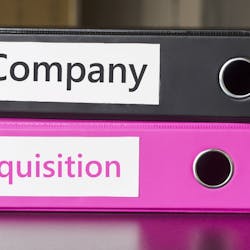Energy efficiency in vending machines is becoming a competitive weapon as locations seek environmental goals when letting bids or securing contracts. Over the past several years, efforts in the vending/OCS industry have provided the basis for some to gain a competitive advantage through enhanced imaging based on energy conservation and stainability initiatives.
The Coca-Cola Co., for example, has announced a strategic directive that its vending equipment use half as much energy in the year 2010 as it consumed in 2000.
Various aspects of the vending/OCS industry lend themselves well to such initiatives, as evidenced by company Websites and sales literature promoting energy efficient solutions. As a result, many operators prefer office and warehouse locations that are energy efficient while striving to operate a fleet of smartly fueled vehicles to manage environmentally-friendly, unattended points of sale. The focus being to implement “green” into multiple aspects of the vending/OCS channel and thereby derive energy reductions, cost savings, and sensible recycling practices, whenever and wherever possible.
The vending/OCS industry represents a largely untapped opportunity for energy conservation through efficient practices.
The implementation of more effective and economical temperature and lighting techniques on vending equipment, for example, can produce significant energy and money savings. Experts project a possible savings of 13,000 kilowatt hours with additional, related savings in other areas (e.g., carbon dioxide reduction) within a 10-year period for a cold beverage vending machine, 10 years being the average life of the machine.
Given it is estimated that there are 4 million temperature-controlled vending machines and 10 million glass door coolers in the U.S., significant savings are possible. As a general rule, energy efficient products tend to cost more initially but often have a shorter return on investment based on utility cost savings than a comparatively less efficient model.
According to the 2007 Federal Register, cost per electric kilowatt hour is estimated at 10.65 cents. At this rate, it costs only 19 cents per day to operate a snack vending machine and about 57 cents a day to operate a glassfront beverage vending machine.
ENERGYSTAR EMERGES
The vending/OCS industry has been aggressive in reducing energy consumption since 2004, which marked the adoption of inaugural EnergyStar regulations. To date, a significant volume of vending equipment is greater than 65 percent more energy efficient than similar products produced prior to EnergyStar.
Additionally, outside agencies such as Green Peace and numerous utility companies have publicly acknowledged the gains made by vending machine manufacturers. Unfortunately, some segments of the industry have been slower to adopt eco-friendly applications than others.
The primary reasons typically attributed to the lack of eco-adoption in the vending channel are: 1) In most cases, the vending machine owner is not the entity responsible for paying for the power to operate the device; and 2) The end user (location) responsible for paying the cost of operation is often unaware of the expense incurred, despite the fact that usage may cost $100 to 300 per year per machine. Accelerated adoption of energy efficient practices may well hinge on split or shared incentives for vending channel participants.
WHAT IS “GREEN”?
What does being “green” mean? Although the term has become a popular descriptor, there is no standard definition for “green” beyond its attachment to an eco-friendly business. Given the many building, transportation fuel, and governmental equipment guidelines and the industry specific devices companies have developed, being green can range from using hybrid fuels, to low-watt lighting, to tightly controlling temperatures, to stocking organic food products, to waste recycling, to overall reduction in carbon emissions.
Compliance with various benchmarks can result in the certification of a process receiving a “green” label.
While a newly purchased vending machine or fleet vehicle may directly satisfy environmentally-friendly standards, older legacy equipment may require a retrofit application to meet certification standards. In fact, some governmental agencies have proposed wording to be included in vending contracts as well as classification categories for segmenting machinery based on efficiency and functionality.
These environmental checklists are designed to assist with decision making relative to vending/OCS contracting and operational methodologies. For example, EnergyStar policies contain guidelines based on achieving satisfactory environmental performance and for the classification of beverage vending machines.
In fact, in the near future it is expected that some locations may require vending operators to include environmental considerations and green practices in site location bids.
Not only does being green mean being environmentally-friendly, but it also includes stainability; a concept implying an effective operational plan of five to 10 years. Seeking eco-friendly status should be an important component in the strategic plan of a vending/OCS company. Similarly, consumers have grown increasingly interested in patronizing vendors that feature environmentally and organically-based products and services. In general, energy savings also helps prevent the emission of carbon dioxide, the most common greenhouse gas.
Improved technology can make gains in energy efficiency more easily attainable. For example, a building can establish credit toward Leadership in Energy and Environmental Design (LEED) certification in the use of electricity by implementing a renewable energy program through the use of wind power, run-of-river power, solar power, window tinting, and other techniques designed to contain and/or reduce energy consumption and related expenditures.
Some vending/OCS operators have sought benefits in this area by applying an EnergyMiser from USA Technologies Inc. as an add-on device to select equipment (usually pre-EnergyStar) to ensure energy consumption reductions when a space is unoccupied or procuring a newer vending machine with built-in software featuring a “sleep mode” setting that automatically initializes an energy saving mode after a predetermined period of inactivity.
The linking of energy use and machine operations presents a natural synergy for conservation. At the time a space becomes unoccupied (no persons sensed in the area), all non-critical equipment functions can be automatically controlled or turned off, coming back on in order to maintain product freshness through a proper holding temperature. Sensors can be programmed to automatically control a certain type of lighting, refrigeration, and other features through ‘power-down’ sequencing.
The evolution of formal energy standards for beverage vending machines began with the Energy Policy Act of 2005 (EPACT 2005). Specifically, the following items of the Act were considered critical to development:
- Sections 135(a)(3) and 136 (a)(3) defines the terms applicable to beverage vending machines.
- Sections 135(c)(4) directs DOE to issue by rule, no later than Aug. 8, 2009, energy conservation standards effective for equipment to be manufactured on or after Aug. 8, 2012.
- Section 135(b) directs DOE to adopt American National Standards Institute/American Society of Heating, Refrigerating, and Air-Conditioning Engineers, Inc. (ANSI/ASHRAE) Standard 32.1-2004 as the test procedure for equipment evaluation.
The above actions were the first set of energy conservation regulations at the federal level. In 2007, a subsection was added to existing legislation that requires any new or amended energy conservation standard adopted after July 1, 2010 to incorporate ‘‘standby mode” and “off mode” energy use. Revised DOE minimum energy standards relative to vending are scheduled to take effect no later than 2012 with a review of the standards taking place every five years. DOE requirements tend to be more stringent and thereby may override many state and municipal regulations, making it easier to understand and comply.
ENERGY DEPARTMENT CLARIFIES STANDARDS
The DOE categorizes equipment based on performance-related or utility-related factors affecting energy efficiency. DOE maintains two classifications for refrigerated beverage vending machines: “zone-cooled’’ and ‘‘fully-cooled’’ as opposed to glass-front and solid-front machine designations. In addition to whether a beverage vending machine is zone-cooled or fully-cooled, the ambient conditions that a machine operates within also affect energy efficiency. As a result, DOE further segments requirements based on whether the equipment will function in an indoor-only environment.
Next month, we will examine the federal government’s initiatives for vending machines.





